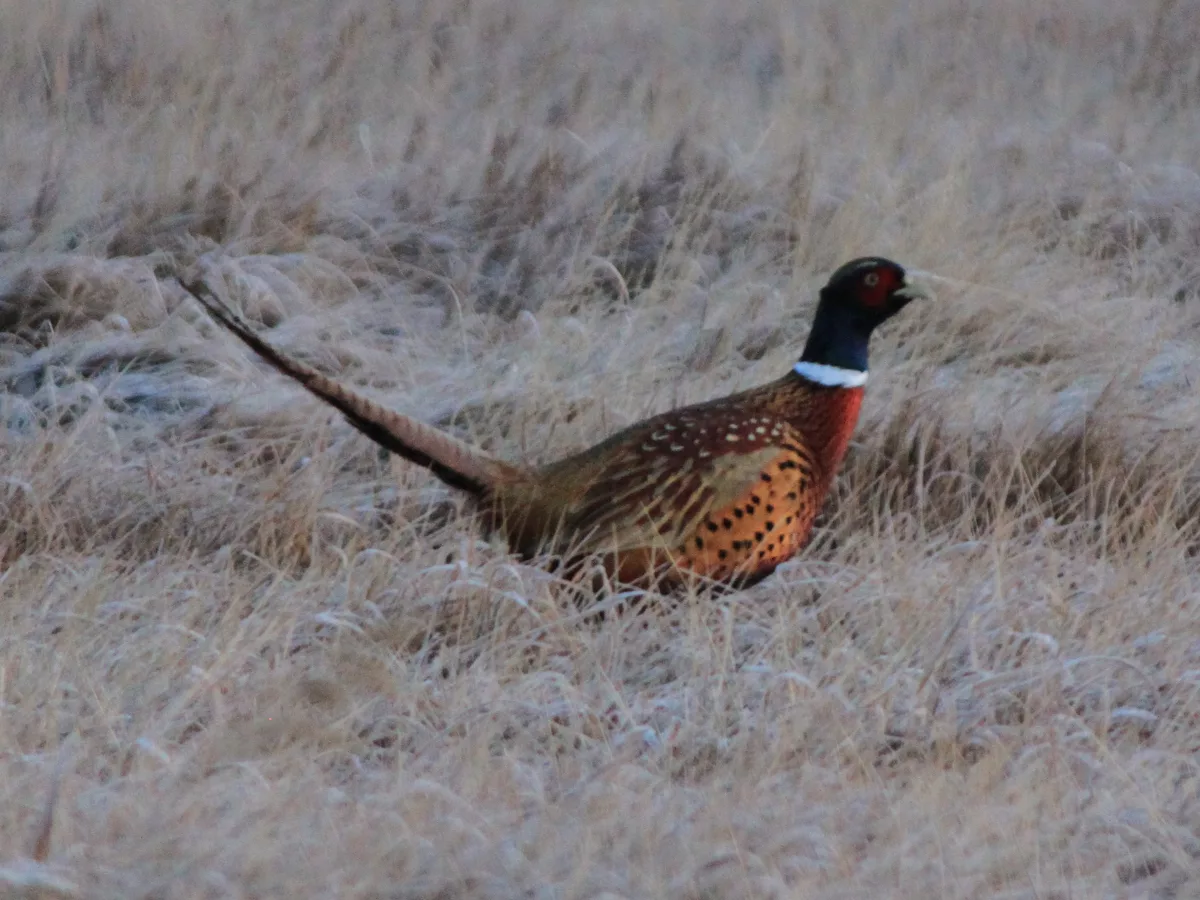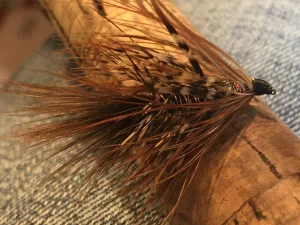
Cooler nights and shorter days signal the approach of hunting seasons for partridge, grouse and of course, pheasants. The rewards go beyond memories in the field, however, as these birds provide materials for upcoming fishing projects and success on the water.
By Nick Simonson
About this time of year I start to get really primed for what’s to come. Sure the cool mornings and warm afternoons behind a good dog while under a clear blue sky surrounded by the beiges and golds of rolling grassy hillsides are a moment in time to be held in memory forever. But what really gets me geared up for hunting my favorite upland game is the sad state of affairs at my fly tying desk by this point in the year. By now, following a long winter of tackle crafting in which jigs, flies, spinners and other offerings have been tied up and assembled, and a spring and summer of fill-in patterns that suddenly become hot for trout, bluegills, crappies and other species, the materials are looking a bit sparse.
At the edges of each pheasant skin the best of the fluffy marabou has been stripped away, leaving gaps so wide a can of Ron Popeil’s hair-in-a-can couldn’t fill them in. Likewise, the hallmark tail feathers, especially those long ones with the lavender trim from last year’s late-season birds look like a busted comb with a bunch of teeth missing. Maybe it’s middle age, but somehow this addressing of my short supply of tying feathers just turned into a subconscious manifestation regarding my hairline.

Nevertheless, before October’s premier hunting season arrives, other birds provide a bevy of tying materials that I’m starting to realize I’m running low on. All of the choice breast feathers from a mature Hungarian partridge taken a few seasons back have been plucked and applied to soft hackles and nymphs. They are, after all, the ideal necking on those patterns with their light-and-dark barring that resembles the segmented legs and frilly appendages of a variety of underwater insects.
Sharptailed grouse and ruffies both provide a quick fix of marabou, with the former always producing some baitfish-inspired patterns utilizing the underfluff which runs anywhere from a shade of spottail shiner to the depths of a fathead chub in dark spawning colors. Typically good for a few dozen crappie jigs, the first mature sharpie of the year is always a good save for the workbench and a spring of on-the-water success. The latter grouse too provides marabou that can be used in a pinch, but the coveted feathers of the tail fan produce the body of the breadcrust nymph, one of trout fishing’s neatest caddisfly larvae imitators.
These are just the birds I pursue with the limited time I have. Friends and fellow hunters have been known to drop by with a duck skin or a few wings from their hunts for inclusion in my offerings and some spillover patterns for their own fly and tackle boxes. Once in a while, a bag of turkey feathers even finds its way into my freezer for preservation and use in the coming winter. The bounty of fall extends far beyond the harvest in the garden and the farm fields as the calendar rolls along and bird seasons open up.
It’s just one of the many ways that nature brings things full circle. The thrill of the hunt produces incredible opportunities and memorable moments. The reward of wild game pursued behind hard-working flushers and pointers doesn’t end with the cleaning of the bounty on the tailgate either. For a few extra moments required to save a skin for future use is worth it, as dozens, if not hundreds of fish-catching flies and lures can come to be from the part of the bird that doesn’t find its way into the pan or the crockpot. This season consider saving a set of feathers for your off-season efforts, or think about venturing into all that is possible in the nice of fly tying, jig crafting or lure making with those birds you harvest yourself. You’ll find that the hope of harvesting a brightly colored rooster or a thick-feathered sharptail only adds to the upcoming upland excitement…in our outdoors.
